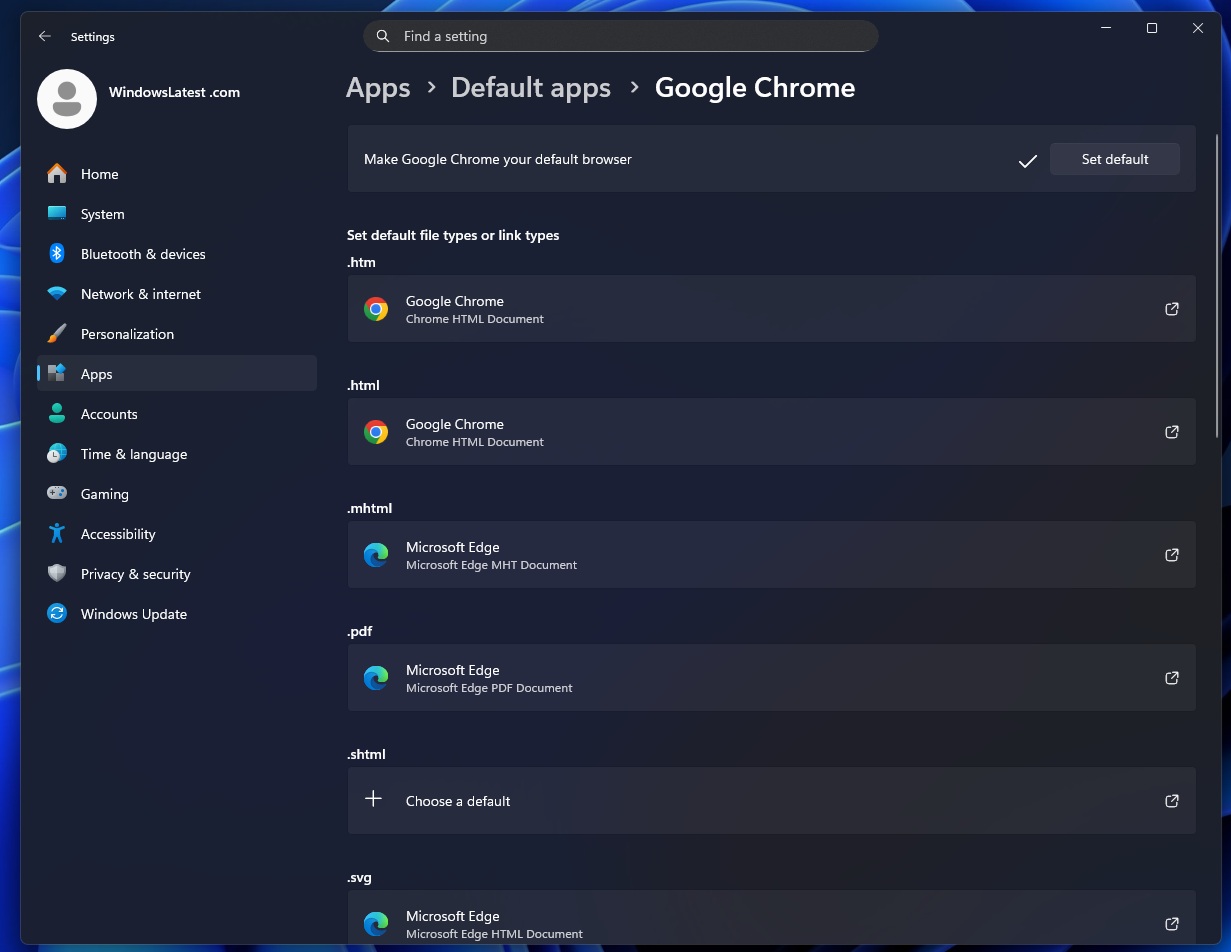A recent Microsoft Edge update has references that seem to suggest Windows 11’s taskbar or Start menu search might finally respect your default browser. Right now, if you set Chrome as your default browser and click on web links in Windows Search, you’ll still get redirected to Edge. But a future update will open the default browser, such as Chrome.
A lot of features in Windows Search are actually powered by Microsoft Edge. That means a change to the browser also changes Windows search behaviour. In an Edge Canary build, there are multiple new flags that point towards the freedom to choose different search engines and browsers instead of Bing and Edge.
Windows Latest spotted the following new flags, which contain some hints at what the feature could be:
msEdgeSearchboxHandlerSendsFaviconData msExplicitLaunchNonBingDSE msExplicitLaunchNonBingDSEAndNonEdgeDB msExplicitLaunchNonEdgeDB msSettingsMatchWordStart msWSBLaunchNonBingDSE msWSBLaunchNonBingDSEAndNonEdgeDB msWSBLaunchNonEdgeDB
In the above case, Non-Edge-DB is the Default Browser (maybe Chrome or Firefox). “WSB” likely means Windows Search Bar. DSE could be the Default Search Engine. If you connect the dots, it adds up and makes sense to the problem we have.

Currently, whenever you do a taskbar search, it fetches results from the Bing search engine in MS Edge. This happens all the time. For example, we’ve set Chrome as the default browser. Edge’s default search engine is Google. Still, Windows Search sends us to Bing.com in Microsoft Edge. Neither of our preferences is respected.
When msWSBLaunchNonBingDSE is turned on, Windows will switch the search engine based on your preference and fetch results from it instead of Bing. So, you can change your preferred search engine to Google, DuckDuckGo, or any other in Edge. Whenever you type the search entry, the Windows Search box will use that engine by default.
Now, we have another feature called msWSBLaunchNonEdgeDB. In this case, your default browser is respected, so if you’ve Chrome as your default browser, Windows Search will open Chrome over Microsoft Edge. But in this case, Windows Search will still send you to Bing.com in Chrome.
Thankfully, we also have a mix of these two behaviours. Windows Latest found that it’s called msWSBLaunchNonBingDSEAndNonEdgeDB.
When it’s turned on, Windows Search will respect your default search engine and as well as your default browser. In other words, it’ll open Google in Google Chrome if you’ve set the two as your preference.
There are three other similar WSB flags with the term “explicit” in them. It simply means that the system will use them to redirect search requests via your default browser and search engine.
Here’s a quick demo of how the feature would look once implemented in Windows 11 for everyone:
But is there really a point in introducing non-Bing search engine support in Edge via Windows Search? Well, not everyone prefers Chrome or other browsers, but might prefer a different search engine via Windows Search because Bing is not on par with Google for some queries.
Improved favicons and settings search
Windows Latest also spotted a reference to the msEdgeSearchboxHandlerSendsFaviconData flag, which suggests Edge will improve the overall experience of querying other search engines inside the search box.
Favicons are the small icons you see in front of the site’s name and act as an identifier. The flag will pass the accurate favicon data to the search results so you can recognize them and click on the correct one.
Microsoft also wants to refine the search process inside the Edge settings. Whenever you search for a setting, Edge will match the words from the beginning to generate accurate results of all the toggles/options containing the word.
For example, if you type browser in the search box, it’ll start matching from the start of the word.
We don’t know when these changes will be rolled out. We also don’t know if Windows Search and default browser changes are exclusive to Europe region.





















